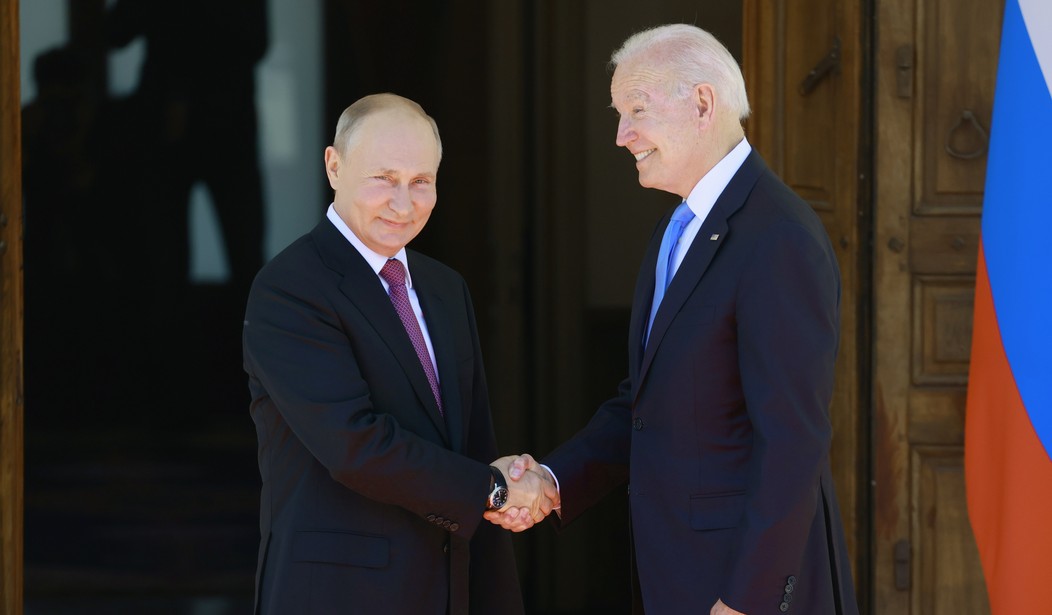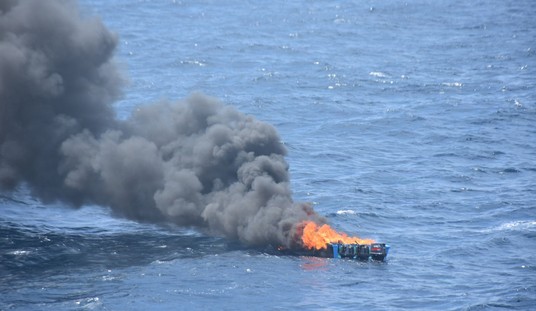There’s a very good reason Vladimir Putin is making his move on Ukraine now. He’s a wily, tough leader.
And Democrat presidents named Joe Biden and Barack Obama are not.
Numerous speakers at the conservative gathering of the annual CPAC conference here in Orlando underlined that ominous point that we are to endure for 34 more long months.
This is a notable pattern of the last two Democrat presidents who, with scant exceptions, have displayed an abiding inability to make wise and decisive foreign policy choices when required.
That’s also a good reason why Americans tell pollsters they have more confidence in the Republican Party on issues of national security. Here are some compelling examples produced by the lightweight duo of Biden and Obama and that loud Republican Donald Trump whose prosperous, peaceful presidency separated their reign of errors.
Mike Pompeo, President Trump’s Secretary of State: “We’ve seen a Russian dictator now terrorize the Ukrainian people because America didn’t demonstrate the resolve that we did for the four years prior.”
Adam Laxalt, Nevada GOP candidate for Senate: “If you’re constantly telling the world that America is flawed and weak, you get Putin invading Ukraine.”
Gov. Kristi Noem: “If we ever needed a reminder that leadership matters, the last 48 hours have shown us what happens when America projects weakness. And that’s what President Biden has done.”
Ric Grenell, former ambassador and acting Director of National Intelligence: “Joe Biden projects a provocative weakness to the world.”
Now, here are some thought-provoking instances from our country’s recent history showing that elections do have consequences, not all of them good: There are others.
In 2014, Russia’s Putin annexed Crimea from Ukraine. Barack Obama was president then and – oh, look! – Joe Biden was vice president. That administration slapped a series of sanctions on Russia and Russians that so far have changed absolutely nothing.
Remember 2012 was an election year. In the last debate between Obama and Mitt Romney, the Republican observed that Russia remained a major strategic threat. Obama, then Biden, mocked Romney for still living in the 1980s. Here we are in 2022 and those Democrats are still wrong.
In those days, a campaigning Obama assured Americans “Al Qaeda is on the run.” Then came the terrorist attack on the U.S. consulate in Benghazi. when the president disappeared for 16 hours while a mob burned the facility and killed four Americans.
The next day, before dashing off to fundraisers in Vegas, Obama promised swift justice, which has yet to arrive.
That same summer, Obama was asked what could cause him to initiate military action against the murderous Syrian regime of Bashar al Assad. Speaking without a teleprompter Obama said, “We have been very clear to the Assad regime that a red line for us is we start seeing a whole bunch of chemical weapons moving around or being utilized. That would change my calculus.”

A year later, after unconfirmed reports of continued chemical weapon use, Syrian forces used sarin gas to choke, suffocate, and convulse 1,400 civilians to death. Obama failed to act.
The wily Putin stepped in to get Obama off the hook and help his Syria ally. He offered to monitor Syria’s surrender of 600 metric tons of chemical weapons. It wasn’t all of the chemicals, of course. But Obama still boasted, “We’re getting chemical weapons out of Syria without having initiated a strike.”
In return, Putin gained access to Russia’s first warm-water port. Win-win for him again.
In 2016, Donald Trump, the loud, profane, and skillfully unpredictable leader, was elected president with a term ending Jan. 20, 2021.
Unlike most modern U.S. presidents, Trump launched no new foreign military actions. In fact, he ended U.S. troop involvement in Somalia and continued the Afghan draw-down with an end date in April 2021 before the summer combat season began.
Notably, during Trump’s term, Putin did not launch any new military adventures either.
Not until 60 days after Trump left office with doddering Democrat Biden as U.S. commander in chief — Putin launched with impunity his massive military buildup on Ukraine’s borders with Russia. Last summer, he published a manifesto claiming Ukraine was not an independent country but an integral part of Russia.
Not by accident, with an unaware Biden in office, China increased its threats on Taiwan and North Korea resumed its missile tests.
Last week, after some diplomatic charades orchestrated by Biden, who only threatened economic sanctions, Putin sent his forces in to topple Ukraine’s elected government. Biden, whose sanctions came too late, had announced no U.S. forces would intervene to protect the democracy.
The lead-up to the global impression of American leadership, of course, was driven by Biden’s horribly botched troop withdrawal from Afghanistan last summer. First, Biden postponed the withdrawal into the peak Afghan fighting season with the Taliban on the march.
All the remaining 2,500 U.S. troops were withdrawn on Biden’s orders over the generals’ advice. But — oops! — thousands of evacuees were left behind caught in the chaos of a Taliban takeover.
Some 6,000 U.S. troops were returned to Afghanistan to attempt secure evacuations. Biden promised on national TV the soldiers would not leave that time until everyone who wanted out got out.
A suicide bomber killed 13 American soldiers.
Biden ordered another pullout, leaving thousands of Americans and vulnerable Afghan allies behind. Most are still there.
What a contrast between Biden and Trump. Just three months into his first year, in April 2017, Syria once again used chemical weapons on innocent civilians in rebel-held areas.
Trump had said, “It is in the vital national security interest of the United States to prevent and deter the spread and use of deadly chemical weapons.”
Three nights later, under Trump’s orders, two missile destroyers in the Mediterranean launched 59 Tomahawk missiles to destroy much of the Syrian airbase used for the gas attack.
But there was another side to Trump that we never heard much about. Iran, in June of 2019, shot down a U.S. surveillance drone. As usual, the Pentagon offered the president a variety of responses.
Trump selected retaliatory strikes on Iranian radar sites. The planes launched. As they approached the targets, Trump asked for estimated Iranian casualties. The generals said 100-200.
The president immediately canceled the attacks as out of proportion to the loss of an unmanned aerial robot.
Yet seven months later, Trump took prompt action against Iran. As they had with previous presidents, the military in January of 2020 informed the White House they’d spotted Qassem Soleimani, Iran’s top general and the architect of Iran’s terror exports and the vast IED program that killed and maimed so many Americans serving in Iraq.
This time, the U.S. president was decisive. Soleimani had just arrived in Baghdad from Beirut to meet with Iranian militia destabilizing the Iraqi government. The terrorist leader may have heard the drone overhead. But he never saw the two Hellfire missiles that turned his car and career into smoldering junk.













